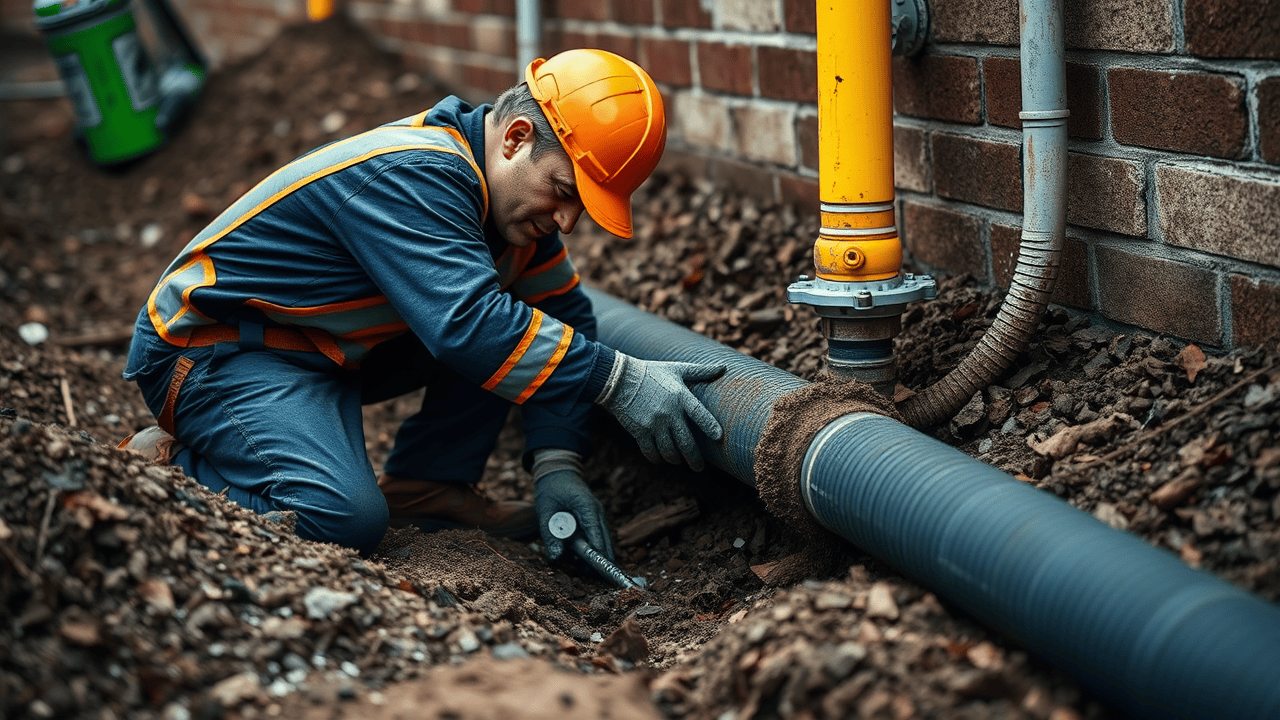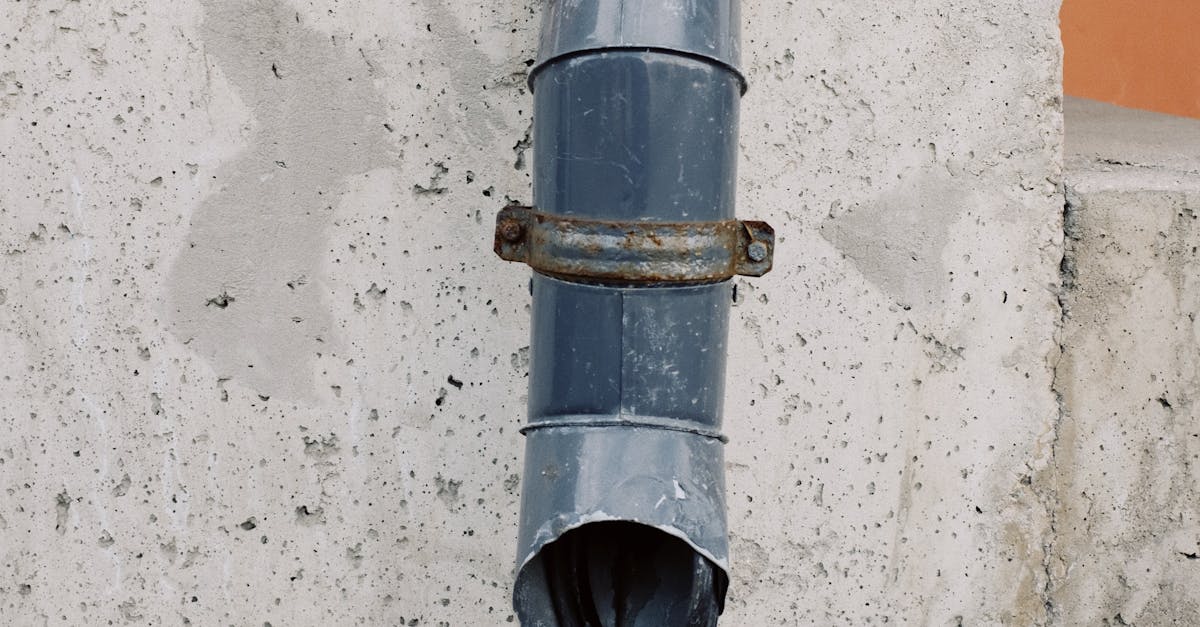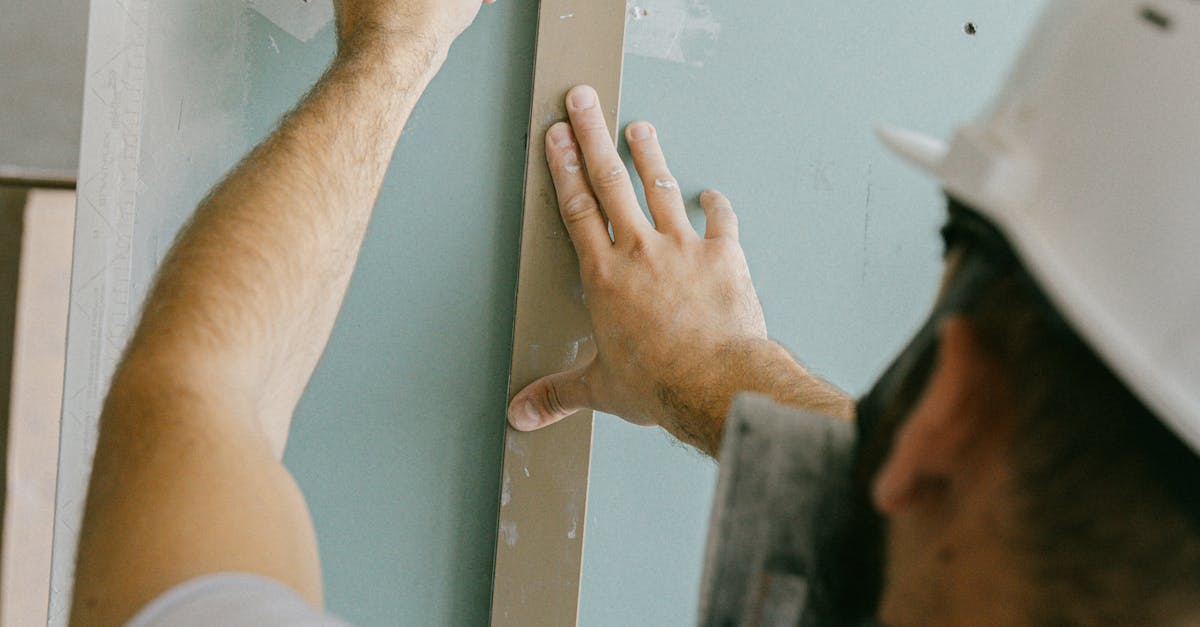
Using Epoxy Resin for Quick Fixes
Epoxy resin serves as an effective solution for addressing minor damages in underground sewer pipes. This method seals cracks and prevents further leaking, providing a quick fix before more extensive repairs are needed. Its ease of application makes it a popular choice among homeowners looking to deal with urgent issues. When considering sewer line installation and repair in Eugene, Oregon, epoxy resin can prove to be a valuable asset for immediate repairs.
The application process typically involves cleaning the affected area to ensure proper adhesion. Once prepped, the epoxy resin is mixed according to the manufacturer's instructions and applied directly to the damaged sections of the pipe. It hardens quickly, allowing for a prompt return to normal drainage. This method requires minimal excavation, reducing disruption around the property while effectively extending the life of the existing sewer system.
StepbyStep Application Process
When using epoxy resin for repairing a broken underground sewer pipe, begin by ensuring that the area around the broken section is dry and clean. Use a root saw to remove any obstructions and expose the damaged pipe. It’s essential to focus on the specific area needing repair while also ensuring that surrounding surfaces are prepared for the resin application. Make sure to wear safety gear, including gloves and goggles, to protect yourself from chemicals during this process.
Once the pipe is prepared, mix the two-part epoxy resin according to the manufacturer's instructions. Apply the resin evenly over the damaged section, making sure it fills all cracks and gaps. Allow the resin to cure as directed, typically requiring several hours or overnight. After curing, inspect the repair for any missed areas or necessary touch-ups. For comprehensive assistance, consider contacting professionals for sewer line installation and repair in Oregon.
Replacing the Damaged Sections
Replacing damaged sections of an underground sewer pipe often requires careful planning and execution. Initially, it is crucial to identify the exact location and extent of the damage. This may involve using inspection cameras or traditional digging techniques. Once the damaged areas are located, excavating the soil around the pipes becomes the next step. Proper equipment and safety measures should always be utilized to avoid compromising the surrounding structures and to ensure a safe work environment.
After excavation, the old pipe sections must be removed and replaced with new materials that meet local regulations. Choosing the right type of pipe is essential, as it affects the longevity and functionality of the sewer system. Professionals often recommend polyvinyl chloride (PVC) or other durable materials for repairs. Residents interested in options for their sewer line installation and repair in Eugene, Oregon, should consult experienced contractors for an effective solution tailored to their unique circumstances.
Essential Steps in Pipe Replacement
Replacing a damaged underground sewer pipe requires careful planning and execution. First, it is crucial to locate the exact position of the damaged section and mark it clearly. This helps minimize disruption to the surrounding area. Next, dig out the damaged segment of the pipe, ensuring that the excavation site is safe and secure. After the damaged section has been removed, it's important to clean the ends of the remaining pipe to ensure a proper seal with the new piece.
Once the necessary preparations are complete, the new section of pipe can be installed. Align it correctly with the existing pipeline, using appropriate connectors or couplings to secure it in place. A sealant may be applied to prevent leaks. After making sure everything is fitted properly, fill the excavated area back with soil, taking care to avoid disrupting the new connections. For those in need of professional assistance, many turn to companies specializing in sewer line installation and repair in Eugene, Oregon, to ensure the job is done right.
Installing a Pipe Liner
Installing a pipe liner offers an efficient and less invasive solution for repairing damaged sewer pipes. This method involves inserting a flexible resin-saturated liner into the existing pipeline, which then hardens to form a new pipe within the old one. This technique minimizes disruption to the surrounding landscape and infrastructure, making it an ideal choice for urban areas where digging up the ground is impractical.
Sewer line installation and repair in Eugene, Oregon, can benefit greatly from this approach. Not only does pipe lining significantly extend the lifespan of pipes, but it also enhances flow capacity and reduces the risk of future leaks. The process can often be completed in a fraction of the time required for traditional replacement methods, resulting in less downtime for homeowners and businesses.
Benefits of Trenchless Repair
Trenchless repair methods offer several advantages over traditional excavation techniques. These methods minimize disruption to the surrounding landscape, reducing the need for extensive digging. Homeowners benefit from less mess in their yards and driveways, which can save time and money on restoration efforts. Additionally, trenchless technology often results in faster project completion, allowing residents to return to normal routines without prolonged inconvenience.
Another key benefit of trenchless repair is its ability to extend the lifespan of existing pipes. Techniques such as pipe lining create a new, durable layer within the old pipe, enhancing its structural integrity. This is particularly useful in areas like Eugene, Oregon, where older sewer systems may be prone to failure. As a result, sewer line installation and repair in Eugene, Oregon, can be performed efficiently while ensuring a long-lasting solution that mitigates future issues.
FAQS
What are the signs of a broken underground sewer pipe?
Common signs include slow drains, frequent clogs, foul odors, wet spots in the yard, and an unusually lush patch of grass over the pipe.
How can I temporarily fix a broken sewer pipe?
You can use epoxy resin for a quick fix by sealing cracks or small holes. Make sure to follow the step-by-step application process for best results.
What is the trenchless repair method?
Trenchless repair involves installing a pipe liner without the need for extensive excavation, making it less disruptive and often quicker than traditional methods.
How do I know if I need to replace a section of my sewer pipe?
If you notice significant damage, multiple leaks, or persistent issues that do not resolve with minor repairs, it may be time to replace the damaged sections.
Are there any DIY options for fixing a broken sewer pipe?
While some minor repairs can be done DIY, such as using epoxy resin, significant issues may require professional help to ensure the repair is done correctly and safely.


